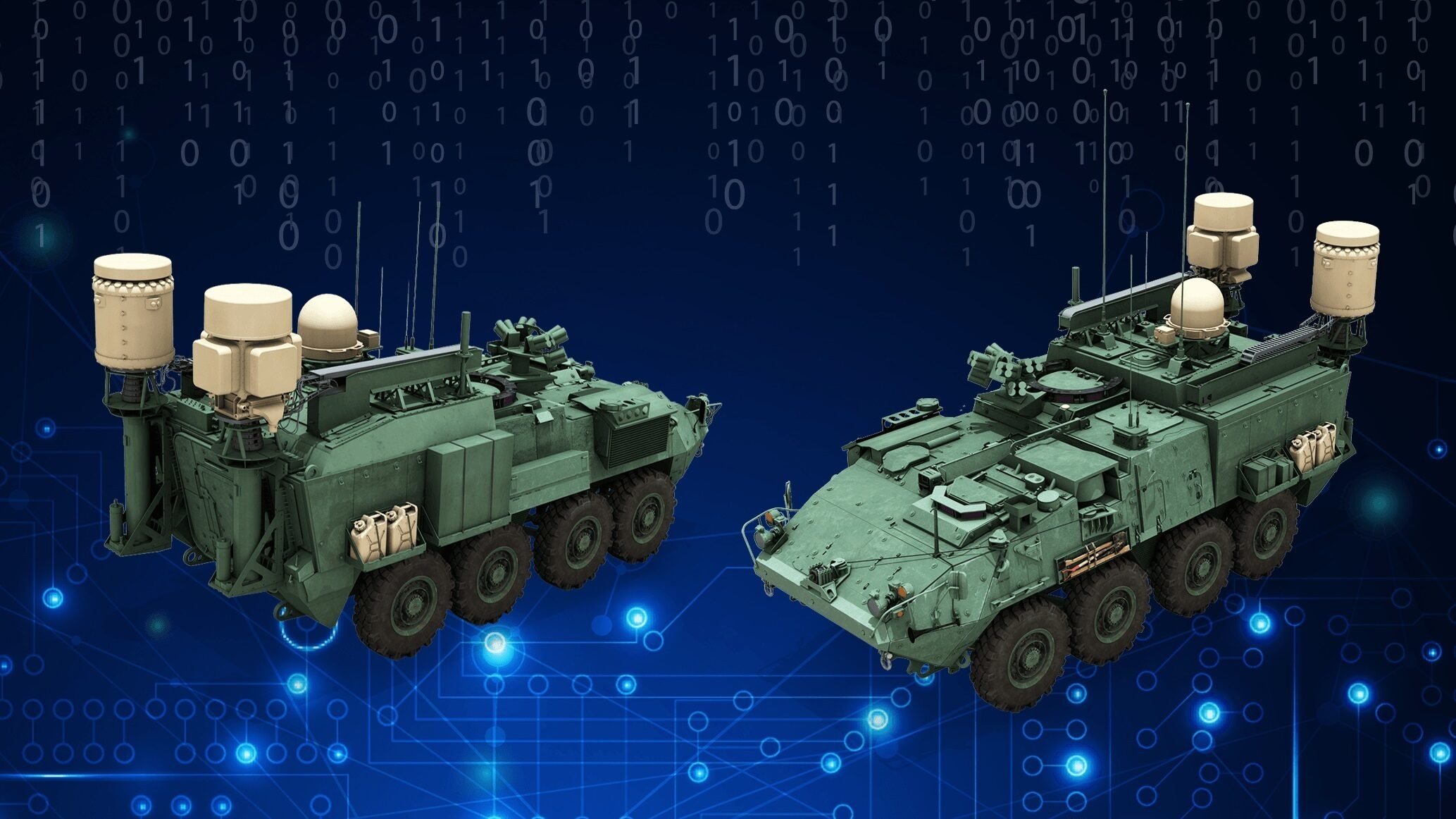
Terrestrial Layer System-Brigade Combat Team design tenets are expeditionary to support the maneuver commander with electronic attack and offensive cyber warfare options to deny, degrade, disrupt, or manipulate enemy signals of interest and the targeted force. (Courtesy Photo Illustration via DVIDS)
WASHINGTON: The US Army’s electronic warfare portfolio is maturing with critical electronic warfare capabilities scheduled for fielding or prototyping in the next year.
The service is in the midst of a multi-year effort to rebuild its EW capabilities, after largely not investing in those platforms since the end of the Cold War. Through several new platforms, soldiers at the brigade level and higher will receive systems that will enable them to do electronic sensing and attack, as well as give commanders a better understanding of the electronic environment on the battlefield.
Closest to fielding is the Army’s Electronic Warfare Planning and Management Tool (EWPMT), designed to allow a commander to better understand and visualize the electromagnetic spectrum on the battlefield during an operation. That should, in theory, lead to better planning choices and decisions on which EW system to apply to any given situation.
Ken Strayer, program manager for electronic warfare and cyber at Program Executive Office Intelligence, Electronic Warfare and Sensors, said that EWPMT is expected to request a full-deployment decision at the end of the current fiscal year with initial fielding scheduled for FY23. The initial plan is to upgrade units with earlier versions of EWPMT to the full kit.
“Up until EWPMT, we had no way to really understand and visualize the spectrum, whether that is the current environment from the commercial activity that’s out, or our blue friendly communications and red enemy communications,” Strayer told Breaking Defense. “Now a commander will be able to understand the environment and he’ll be able to do mission planning so that when he’s planning an operation he can understand how the spectrum and the terrain will be able able to impact his ability to that operation.”
Related: Electronic warfare and drone swarms: Here’s the Army’s plan for EDGE 22
Strayer said that EWPMT will be used by brigades or higher formations initially, but noted that the requirements keep expanding. As the program moves forward, EWPMT will add new capabilities such as connecting to new sensors, completing new modeling and analysis, or add the ability to understand different parts of the electronic environment, Strayer said.
“[There’s] a lot of demand for the capability out there— it’s only growing,” Strayer said.
Terrestrial Layer System
The Army is also working on a pair of systems called the Terrestrial Layer Systems that will deliver integrated electronic warfare and cyber capabilities to soldiers on the battlefield.
The TLS-Brigade Combat Team program will give soldiers integrated electronic warfare, cyber, and signals intelligence capabilities at the brigade level. The program is looking to integrate the platform onto Strykers, Armored Multi-Purpose Vehicles and, eventually, for infantry brigade combat teams.
Strayer said the program office is set to receive two of the early AMPVs as they come off the assembly line for testing.
In September, the Army chose Lockheed Martin to move forward with the Stryker configuration over Digital Receiver Technology, a Boeing subsidiary. The program office has a planned operational assessment in late FY23 that will provide data on the program’s readiness to transition to production and fielding. For infantry brigades, the office is deciding whether soldiers need a vehicle-mounted system or a man-packable one.
“There’s force structure growth. The Army is investing in new electronic warfare soldiers and they’re heading out to the field. They need their equipment,” Strayer said. (Notably, the layer system will include EWPMT on board.)
PEO IEW&S is also developing another electronic warfare system for Army formations larger than a brigade through a program called TLS-Echelons Above Brigade. That program has just started to get off the ground because the lapse in approved appropriations prevented new programs from beginning.
As the Army shifts back to divisions as the unit of action after decades of operating primarily at the brigade level, EW capabilities will be needed by higher-level formations such as divisions, corps or theater armies, as well as the service’s multi-domain task force, which will need longer-range EW capabilities.
“You’re talking about much longer ranges, different type of threat targets that we need to be able to sense and effect,” Strayer said.
He said the program is in its “first phase,” which will include concept development and initial design. That includes defining what the requirements are at each echelon and establishing the best technical approaches. Overall timelines for the program aren’t clear yet, Strayer said.
“Depending on what our two competitive offers propose and what the Army decides they actually want to go out and prototype, [that] will drive the timelines,” Strayers said, adding that testing will start in a few years.
As for the kit each echelon will receive, Strayer expects it’s likely that different formations above brigade will receive different capabilities, but would likely have a “shared common core” with different sensors and effectors.
“There’s some advantages in having one configuration for all in terms of cost of production, but we’re learning that the specific targets and the ranges are different and that’s going to necessitate that we have some different technologies onboard to get at the problem,” Strayer said.
According to Strayer, the office is “very close” to awarding prototype agreements.




















